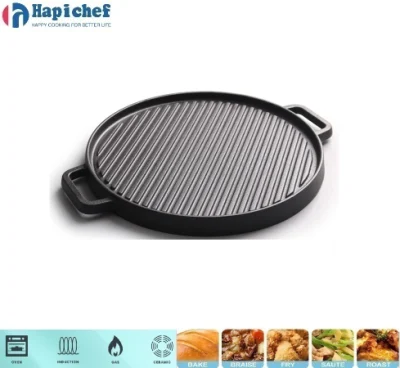Top Exporters of Durable Cast Iron Pans Delivering Quality Cookware Worldwide
The Growing Market for Cast Iron Pan Exporters
In recent years, the kitchenware market has experienced a significant surge in popularity for cast iron cookware, particularly cast iron pans. The heritage of cast iron cooking dates back centuries, and its resurgence can be attributed to a combination of health consciousness, culinary trends, and the ongoing pursuit of durable and versatile cookware. As a result, the role of cast iron pan exporters has become more prominent than ever, creating an exciting landscape for both manufacturers and consumers.
Cast iron pans are celebrated for their excellent heat retention and distribution, making them ideal for a variety of cooking methods such as frying, sautéing, baking, and even grilling. This multifunctionality appeals to home cooks and professional chefs alike, further driving demand for high-quality cast iron products. For exporters, the opportunity lies not only in the increased domestic market but also in tapping into global markets where the appreciation for cast iron cookware is growing.
The Growing Market for Cast Iron Pan Exporters
In addition to durability, the health aspect of using cast iron cookware cannot be overlooked. Unlike non-stick pans, which can release harmful compounds when overheated, cast iron pans are free from synthetic coatings. Furthermore, cooking with cast iron can add trace amounts of iron to food, which is beneficial for those with iron deficiencies. This health-conscious narrative is becoming a significant selling point for exporters targeting international markets, especially where health and wellness are prioritized.
jual cast iron pan exporter

Moreover, the rise of social media and culinary influencers has played a pivotal role in promoting cast iron cooking. Platforms like Instagram and Pinterest are filled with mouthwatering dishes prepared in stunning cast iron pans, inspiring home cooks to invest in these classic pieces of cookware. Exporters can leverage this trend by collaborating with influencers or utilizing user-generated content in their marketing strategies.
Another important factor for cast iron pan exporters is the diversity in product offerings. Beyond the traditional skillet, modern designs include Dutch ovens, grill pans, and enameled cast iron cookware, catering to a wider range of culinary preferences. This diversification allows exporters to meet the needs of various markets and consumer demographics, enhancing their competitiveness on a global scale.
However, challenges also exist in the cast iron export sector. Global supply chain issues, trade tariffs, and varying regulations across countries can complicate the logistics of exporting. For businesses to thrive, it is essential to develop robust supply chains, establish reliable partnerships with manufacturers, and stay informed about international trade policies.
In conclusion, the demand for cast iron pans is booming, and the role of cast iron pan exporters is more crucial than ever. By highlighting the durability, health benefits, and versatility of cast iron cookware, these exporters can successfully penetrate domestic and international markets. As trends in sustainable and health-conscious cooking continue to evolve, there lies a golden opportunity for exporters who can navigate the challenges and capitalize on the growing love for cast iron cooking. Embracing innovation, quality, and storytelling will be key to standing out in this competitive field, ensuring that cast iron pans remain a staple in kitchens around the world.
-
hapichefs-casserole-cast-iron-cookware-symphonyNewsAug.23,2025
-
casserole-cast-iron-cookware-in-a-modern-art-installationNewsAug.23,2025
-
hapichefs-molten-artistry-portable-cast-iron-bbq-grill-birthNewsAug.23,2025
-
forging-flavor-in-acast-iron-bbq-grills-fireNewsAug.23,2025
-
hapichefs-enameled-cast-iron-bakeware-a-chefs-museNewsAug.23,2025
-
why-colorful-enameled-cast-iron-bakeware-improves-meal-tasteNewsAug.23,2025
-
Unleash Your Culinary Creativity with Specialized Roasting and Baking PansNewsAug.20,2025
